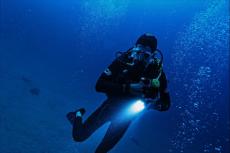pH Threshold Unlocks Reproductive Maturity in Sharks and Rays
In a groundbreaking study, scientists have uncovered a key factor influencing the reproductive maturity of sharks and rays, shedding new light on their life cycles. The research highlights the critical role of pH levels in triggering the onset of maturation in these fascinating creatures.
For fish and other water-breathing animals like sharks and rays, reaching reproductive maturity is a crucial milestone that impacts their entire life history. The size at which they reach maturity, coupled with their subsequent growth rate, affects their longevity and reproductive capacity. Now, researchers have pinpointed a specific pH threshold, termed the "reproductive respiration threshold" (RRT), which kickstarts the hormonal processes leading to maturation.
The study, by Melanie Warren, working with co-author Professor Daniel Pauly, builds on previous findings showing that as these animals grow larger, their gill surface area relative to their weight decreases, leading to a decline in oxygen supply and an increase in acidity in their body fluids and tissues. This decrease in pH levels is believed to be the trigger for initiating maturation.
Varying reproductive respiration threshold
Examining data from over 900 species of sharks and rays, the scientists found that the RRT varies significantly among different groups. They discovered that non-viviparous marine Chondrichthyes, which include sharks and rays, have a lower RRT compared to other species. This difference was attributed to the high concentration of urea, a compound used for osmoregulation, found in marine Chondrichthyes.
To investigate this idea, the scientists examined how much urea was retained by marine rays, euryhaline rays (which can adapt to different levels of saltiness), and freshwater rays. They found that as urea retention decreased, the reproductive respiration threshold (RRT) increased. Interestingly, freshwater rays showed RRT values comparable to those seen in bony fish.
A link between respiration and reproduction
Moreover, the study revealed that viviparity, the reproductive strategy where offspring develop inside the mother's body, further influences RRT. Pregnant Chondrichthyes, which have higher oxygen demands due to their developing embryos, exhibit higher RRT values, highlighting the intricate link between respiration and reproductive maturity.
These findings not only confirm the existence of a critical maturation RRT but also suggest a previously unrecognized role for urea in regulating this process. By unravelling the mechanisms behind reproductive maturity in sharks and rays, scientists gain valuable insights into the complex life cycles of these ancient creatures inhabiting our oceans.



























